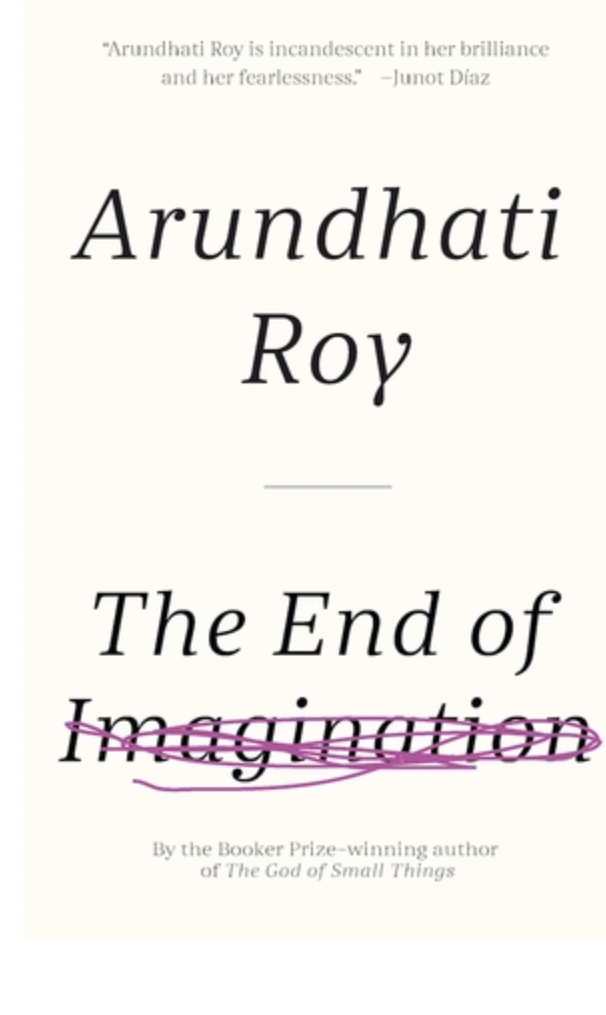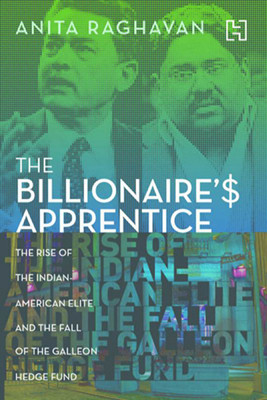
Roy has been a favourite of BJP supporters since last few years in the category of ‘anti nationals’. My first brush with her was an eye opener. And then her heart-punching, gut-breaking article in Outlook created a sort of an uproar, not just inside me but also in the media. However, if you are enamoured with Roy (“Delhi’s greatest living writer” – Mayank Austen Soofi, who does not do justice to neither of those three names), you won’t be able to see the downside of her ‘activism’ (which she calls ‘writing’).
‘End of Imagination’ is a collection of her writings and speeches, most of them during early 2000s. Her critique is scathing and her phrases do make one guffaw, though there is nothing to guffaw about the serious topics on which she writes. Her criticism, mostly, is valid. The power nexus of the corporates, the governments, the bodies (IMF, World Bank, etc.) is beyond the comprehension of the common man.
Roy, however, is no saint. She writes in Guardian on September 29, 2001 and Outlook on October 8, 2001 about the “unconscionable September 11 suicide attacks”. So 9/11 were “suicide” attacks and not “terror” attacks by a bunch of boys who had nothing to do with Islam. That’s Roy for you. She refuses to call out Islamist extremism. When she writes about the Gujarat riots of 2002, she never mentions how the burning of the Sabarmati Express in Godhra was “unconscionable”. She does not utter a word about the exodus of Kashmiri Pandits, but mentions how more than eighty thousand people have been killed in Kashmir over a period of more than a decade with “most being Muslims”. You get the gist of what I am saying? She is not, but almost appears like an apologist for Islamic extremism. You will never, or at least not in this book, read Roy writing about any Hindus suffering anywhere, neither in Kashmir, nor Pakistan, Afghanistan, Bangladesh, nor in sectarian violence which is perpetrated by religious fanatics (always poor and thinly educated if at all) of all religions around India, where policing is not only inadequate but also corrupt to say the least. I get it: she is a champion and a voice of the voiceless, like Dalits, tribals, and so on. But ignoring the sufferings of one religious community because they are a numerical majority is hypocrisy, when called out mildly, and wretchedness of the highest order.
So if I were to compare the thought-process of Roy with a meme, it would be this, this, or this. Throughout the book and almost in all of her writings, the problem is not that her criticism of capitalism or religious extremism (read ‘only Hindu extremism’) is mostly valid and stinging; the problem is larger: she does not present any solutions. It is akin to giving an exam and just getting a pass / fail result at the end, without knowing what you did wrong. She writes about Kashmir, Afzal Guru (of course), JNU, Sardar Sarovar dam, Narmada Bachao Andolan (linked to Sardar Sarovar dam), Bhakra Nangal dam, Gujarat riots, 9/11, American imperialism, Chomsky (her favourite). But yet, the issue remains, and this time in all caps: SHE DOES NOT GIVE ALTERNATIVES OR ANY SOLUTIONS.
She, throughout the many chapters, asserts that she is not an activist but a writer. As a writer she visits dalits, naxals, and others to document their sufferings. But where is the solution to alleviate these sufferings? Now she might as well say: I am not the government and it is the job of the government to find solutions. So it is a full circle with no end in sight.
Roy’s acidic attacks are valid but are to be taken with a pinch, or rather handful, of salt. For there is no end to her spewing, often rambling, monologues. Does Roy ever want to hear her own criticism? I doubt. If you see this interview with Thapar, you can clearly see that Roy does not answer any of Thapar’s questions and in fact skips most of them through misdirections.
Do read Roy, for you also should not be in an echo chamber where everything is perfect and where there are no consequences of development on forests, farms, animals, biodiversity whatsover. Bridging the gap between these development hawks and criticism vultures is the challenge which nobody rises to.
And to make it personal, let me ask this: does Roy not use any of the products or services of these industrial conglomerates she criticizes in every single second of her life? Does she use a smartphone produced by an NGO? How does she fly to give “enlightening lectures” in Amrika? Or does she swim in the oceans to reach the shores? Her clothes always seem to be quite modern, of course with eye liners. Maybe those are produced by NGOs from Naxalbari? Does she use internet created by the tribals of hinterland? Does she use multivitamin supplements and medicines produced by the oppresed castes of the villages? Oh, well, why does she use English language for her communication and writing? I suppose English was brought to India by tourists of the East India Company. And does she use a detergent powder to wash her clothes? Who created that powder? The Tatas or the Unilivers? Does she employ a maid or househelp? Does she use an auto-rickshaw or a taxi driver to travel around in a city? Oh well, isn’t that class supremacy? But for Mayank-Austen-Soofi-types, she is the “best” and so be it. Be the best.
